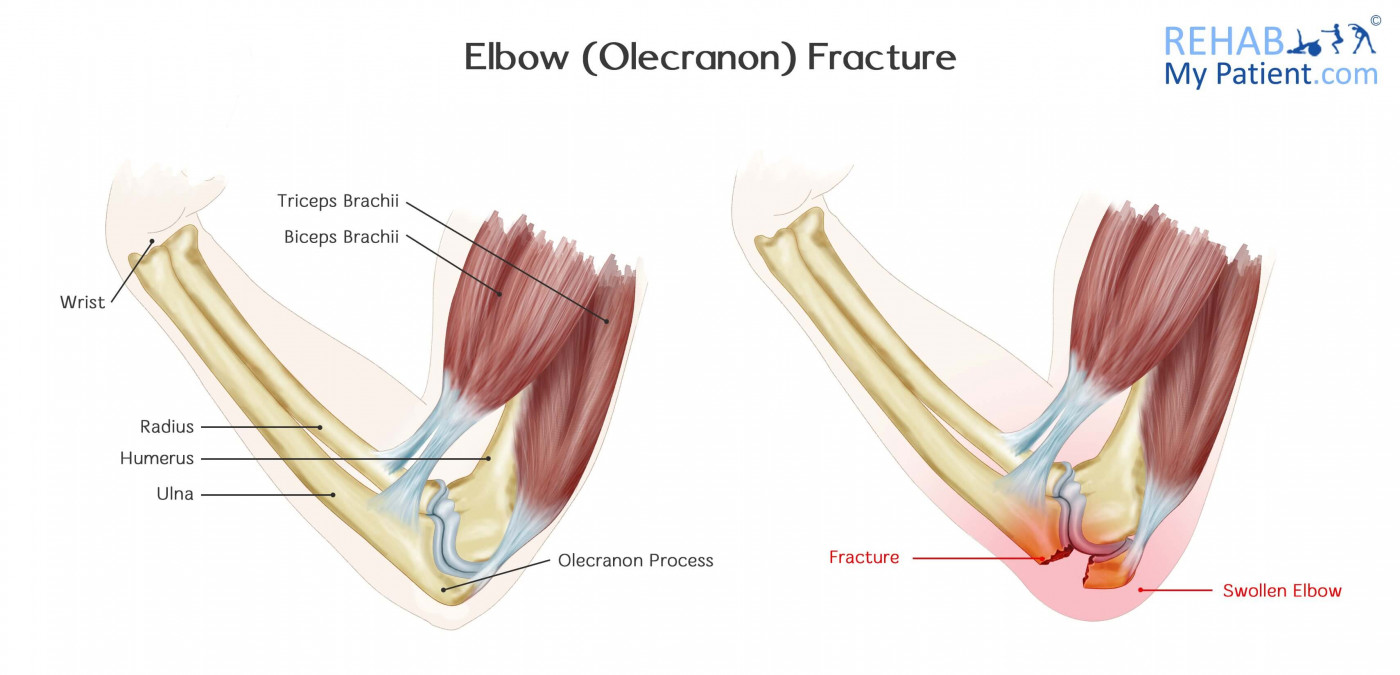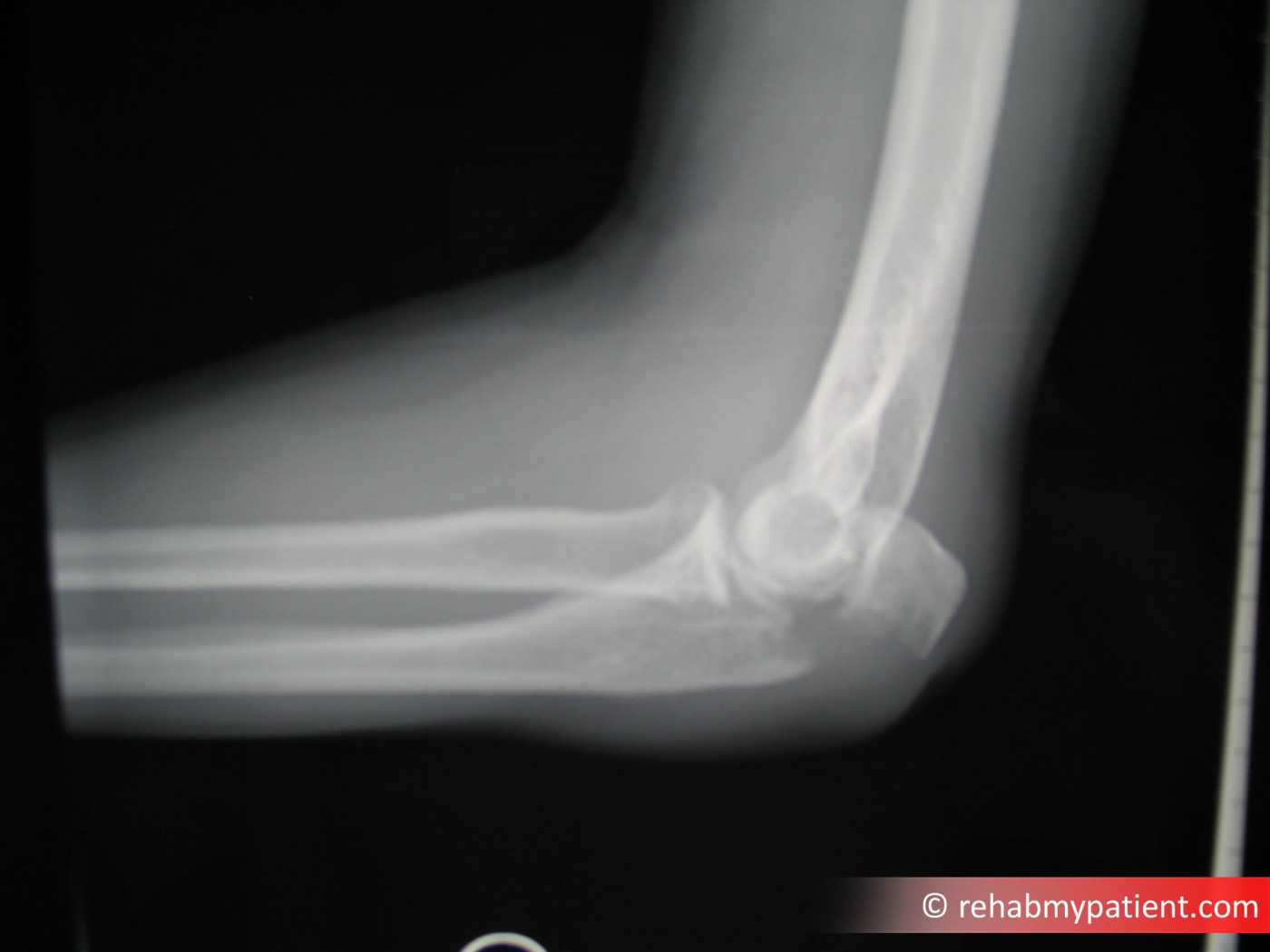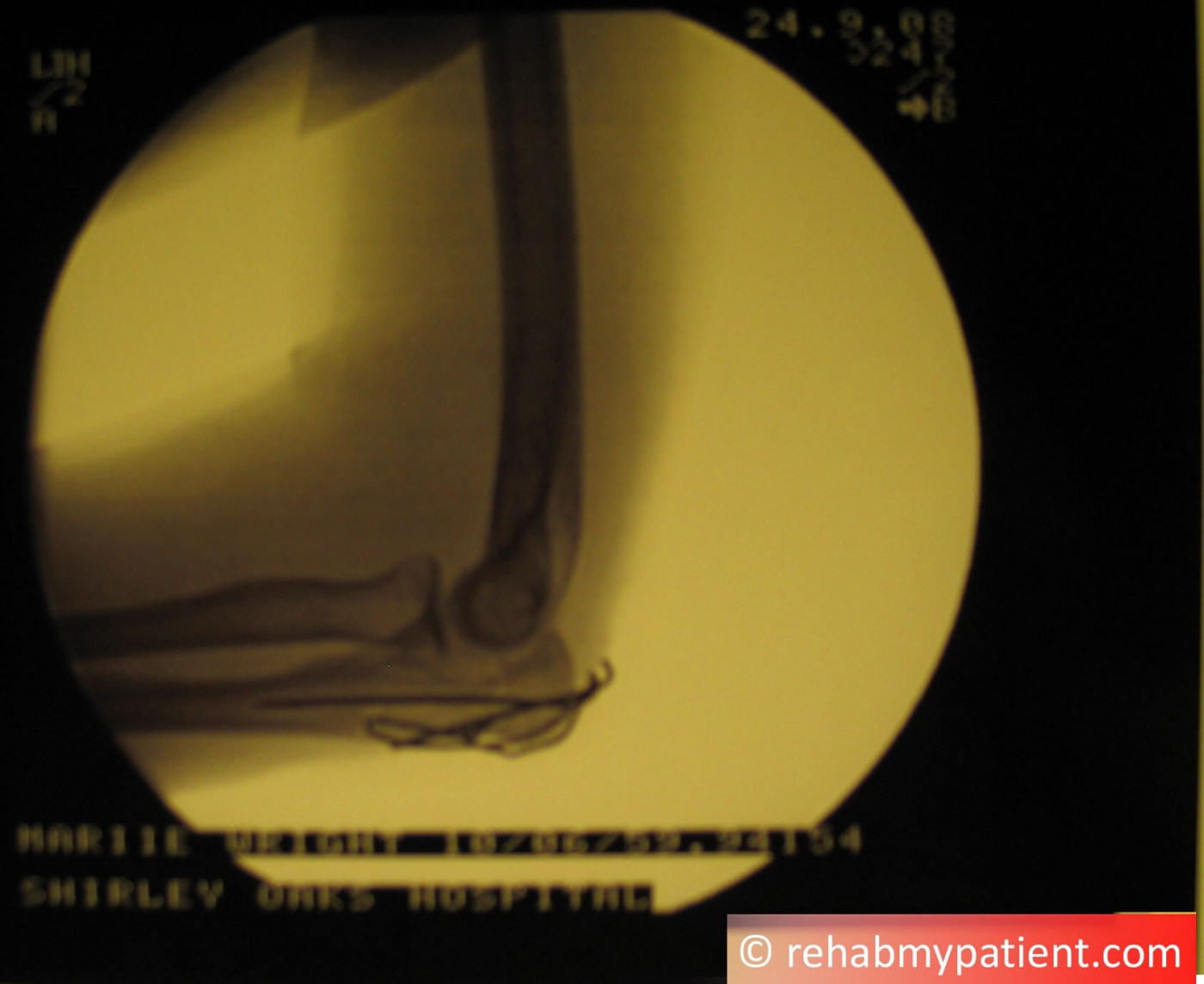
When you bend your elbow, it’s easy enough to feel the tip of it. This bony prominence extends out of one of the lower portions of the arm bone (ulna). The tip is referred to as the olecranon. It’s positioned underneath the skin for the elbow, without an added amount of protection from other soft tissues and the muscles. Letting the bone take a direct blow or falling on the bent elbow can cause the elbow to break.
Elbow (Olecranon) Fracture Anatomy
Three bones joint together to complete the elbow joint. The bone in the upper part of the arm is referred to as the humerus. Two bones from the forearm come together to make up the lower elbow part of the arm. All of the bones have a distinct shape. Ligaments that are connected to the bones work to keep everything in proper alignment.
The elbow is a mainly a hinge joint but does have other articulations. As the muscles relax and contract, two distinct motions occur in the elbow. Bending happens through the hinge joint that lets the elbow straighten and bend, which is known as extension and flexion. Rotation allows the palm to move up and down, which is known as supination and pronation.
Elbow fractures are very painful and almost always consist of falling directly on the tip of the elbow thus fracturing the olecranon. Sometimes the olecranon will shatter into several pieces. Surgery is often recommended, and is vital in complicated fractures.


An X-ray showing a fractured olecranon (elbow)

The same elbow showing the wires used to fix the fractured olecranon (elbow)
How to Treat an Elbow Fracture:
- Sling or Splint
Some fractures only require the use of a sling or splint to hold the elbow in position throughout the healing process. The fracture will be closely monitored in the healing process and the patient is required to return for x-rays on a regular basis. If none of the fragments are in the wrong location after a few weeks, you will be able to begin gently moving your elbow. You won’t be allowed to lift anything for a few weeks with the injured arm.
The nonsurgical approach for fractures requires the individual to wear a splint or cast for an extended period of time. The elbow can become quite stiff and require a great degree of therapy once the cast is removed to regain mobility and movement.
- Surgery
Surgery is often done using a general anesthetic or under a regional anesthetic. Throughout the surgery, you lie on your side, back or stomach. If lying on the stomach, the face might be swollen for a few hours following the operation. An incision is made on the back of the elbow and the bone pieces are put back into place (they are usually wired together depending on the number of fragments). Several methods actually exist for securing the bones where they are supposed to be.
Tips:
- Try to avoid landing directly onto the elbow to prevent fracturing it.
- Bring struck with a baseball bat, dashboard in a car accident and other hard objects can fracture the elbow.
- Olecranon fractures tend to be associated with a more complex type of elbow injury.
- Even once the fracture is healed, it might not be possible to have full range of motion in the elbow. So exercises are vital to be performed at the right time so that you do not lose range of movement.
- Range of mobility after the fracture is determined by two factors: 1) the change in the structure of the joint causing disruption to the articulation of bones, preventing movement. 2) Secondary stiffness or scar tissue adhesions stiffening the elbow. 3) Lack of rehab exercises following surgery or fracture meaning the elbow gets very stiff.
- Expect recovery to take between 12-18 months due to the likely stiffness in your elbow after surgery. Work closely with your therapist to regain full movement.
Sign Up
Sign up for your free trial now!
Get started with Rehab My Patient today and revolutionize your exercise prescription process for effective rehabilitation.
Start Your 14-Day Free Trial